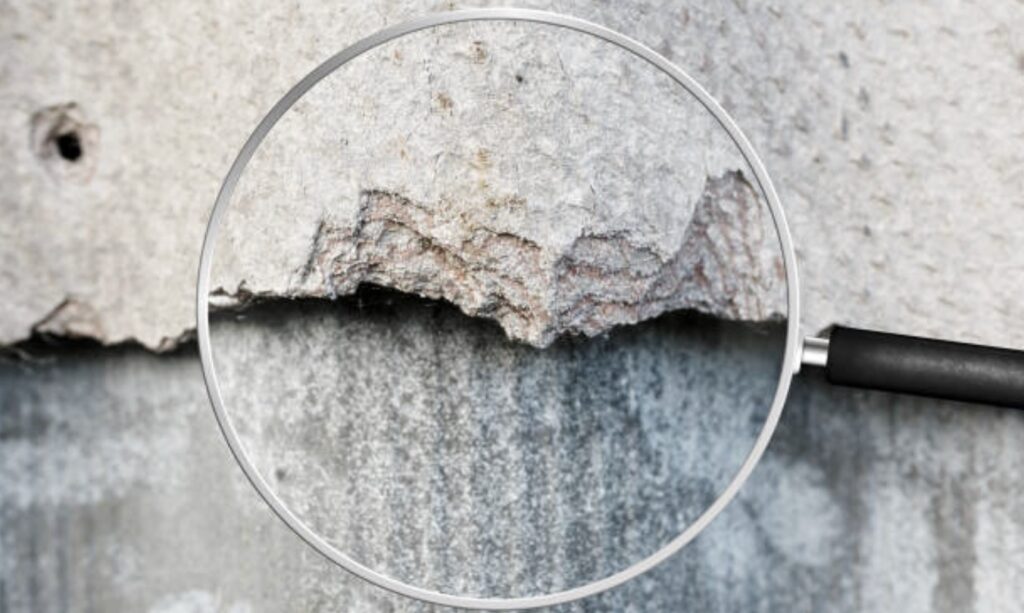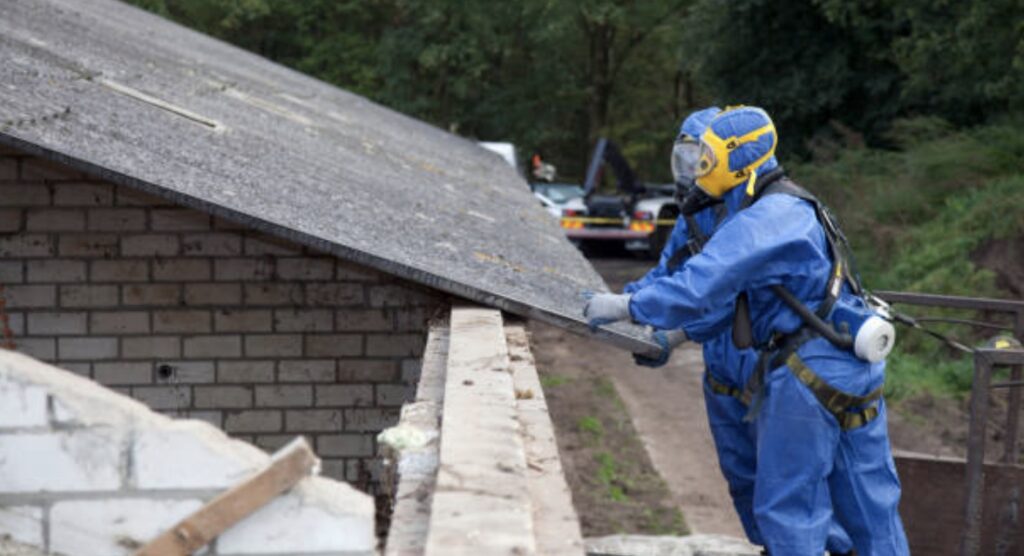Identifying asbestos before renovating or buying an older property is crucial to protect occupants and ensure legal compliance. Many domestic buildings in the UK, particularly those constructed before 1980, still contain asbestos in various forms.
Understanding where asbestos might exist and how to handle it safely empowers homeowners and buyers to take control. This guide focuses on typical residential settings and outlines pragmatic steps—from visual inspection to engaging professionals—to help prevent harmful exposure and manage asbestos risk effectively.
What Does Asbestos Look Like, and Where Is It Found in Homes
Asbestos is a group of naturally occurring fibrous minerals that were extensively used in UK homes for their insulating and fire-resistant properties.
From the 1950s through the 1980s, asbestos was commonly integrated into building products across domestic settings. Many properties still have asbestos remnants even after it was completely outlawed in 1999.
Asbestos-containing materials can appear in a range of household locations, including:
- Corrugated cement sheeting – typically found on roofs and outbuildings
- Vermiculite insulation – commonly present in lofts and attic spaces
- Textured coatings (e.g., Artex) – applied to ceilings and occasionally walls
- Bitumen adhesives and vinyl floor tiles – often used in kitchens, hallways, and bathrooms
- Panel boards – found in bathroom wall linings, airing cupboards, and service duct covers
- Pipe lagging – used around boilers and central heating systems for thermal insulation

Asbestos materials typically appear grey or white and may feel firm or friable. Their physical condition significantly influences their risk level, especially when disturbed during maintenance or renovation.
Preliminary Visual Inspection of Asbestos
A cautious walk-through helps identify asbestos-affected areas by looking for rough coatings, fibrous panels, block insulation, and vermiculite. Observe whether materials appear brittle or flaky—a sign of friability.
Avoid touching, scraping, or drilling in areas suspected of containing asbestos. If any material appears old, deteriorated, or brittle, suspect asbestos and take further steps rather than risk fibre release during routine activities.
Collecting Asbestos Samples Safely
If homeowners choose to collect samples of suspected materials for asbestos testing, they need to first mist the area to reduce airborne fibres. Then, wear a P2 respirator, disposable gloves, and coveralls.
Remove a small piece of suspected asbestos material with hand tools, immediately seal it into a double-bagged container, and clearly label it. Record the location and date. If the material is crumbly, damaged, or in hard-to-reach places, homeowners should cease asbestos sampling immediately and call a licensed asbestos professional instead.
Interpreting At-Home Asbestos Test Kits
At-home asbestos test kits typically include sample bags, gloves, and postal return slips, with laboratory reporting by Polarised Light Microscopy (PLM) in about two to five days for £30–£80 per sample.
While these kits reliably confirm the presence of asbestos, they may not detect trace contaminants or differentiate between types. A negative result may offer some reassurance, but if renovation or demolition is planned, a confirmed professional asbestos survey is still advised to ensure comprehensive safety.
Engaging a Professional Asbestos Surveyor
A professional asbestos management survey locates and assesses visible, undisturbed materials. A refurbishment & demolition asbestos survey is more intrusive and examines areas slated for alteration.
Asbestos surveyors should be UKAS-accredited and use recognised methods like PLM or Transmission Electron Microscopy (TEM) when needed.

Asbestos survey reports typically include:
- ACM (Asbestos-Containing Material) locations
- Condition assessments of identified materials
- Fibre types present in the sampled materials
- Risk ranking based on material type and location
- Recommended control measures for safe management or removal
- Documentation for future reference or regulatory compliance
Risk Assessment and Decision-Making Involving Asbestos
Decisions on asbestos handling include looking at material condition, asbestos type, location within the property, and potential for disturbance.
Intact, non-friable materials behind walls may only require periodic monitoring, while damaged or friable asbestos in active areas like boiler rooms or loft spaces requires immediate intervention.
Decision-making frameworks should prioritise the immediate removal of high-risk asbestos-containing materials and allow for encapsulation or enclosures where disturbance risk is lower.
Temporary Controls of Asbestos
When immediate removal of asbestos isn’t feasible, encapsulation offers a temporary solution, which involves applying specialised sealants to bound materials in place and preventing fibre release.
The area should be secured with barriers and marked clearly with warning signage to restrict access. However, asbestos encapsulation should not be seen as a permanent fix—it delays risk and must be reviewed regularly, with clear plans for eventual permanent remediation.
Safe Asbestos Removal and its Disposal Procedures
Safe asbestos removal and disposal procedures include:
- Engaging licensed asbestos removal contractors for high-risk, damaged, or friable materials
- Sealing off work areas and installing negative-pressure systems to prevent fibre spread
- Setting up decontamination zones for safe entry and exit of workers
- Conducting continuous air monitoring during the removal process
- Following clearance protocols before allowing re-entry to the area
- Double-bagging asbestos waste, labelling it as hazardous, and using proper containment
- Transporting waste under a hazardous waste consignment note to a licensed landfill
- Avoiding DIY asbestos removal due to significant health and legal risks
After-Action Monitoring and Asbestos Maintenance
Once identified, asbestos materials necessitate ongoing oversight, which includes homeowners maintaining detailed records noting material locations, condition, and inspection dates.
Property plans must be updated to reflect ACM presence, and future occupants or owners should be informed. Inspections for managed-in-place asbestos should occur at least annually or after nearby works.
